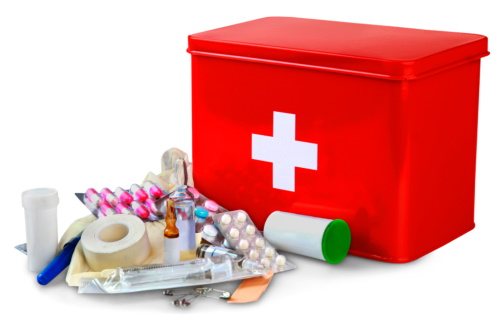Introduction
In today's academic atmospheres, the safety and health of kids is critical. As instructors, we play a crucial duty in guaranteeing that kids are secure from various health risks, including serious allergic reactions. One of the most vital devices in taking care of such emergency situations is the EpiPen. This article supplies a thorough guide on EpiPen management in children customized particularly for instructors. The information laid out below not only covers the technical elements of making use of an EpiPen however additionally spans important first-aid protocols and strategies for developing confidence among educators.
What is an EpiPen?
An EpiPen is a clinical device made use of to supply a dosage of epinephrine to individuals experiencing severe allergies, referred to as anaphylaxis. Understanding how to utilize this gadget efficiently can cpr and first aid certification near me indicate the difference between life and death for a child suffering from allergies.
Why Educators Need to Be Prepared
Educators frequently discover themselves in scenarios where they need to respond to clinical emergencies entailing youngsters. Experience with EpiPen administration can significantly boost their ability to take care of these incidents effectively.
Importance of Emergency treatment Training: HLTAID012 Certification Australia
To confidently provide an EpiPen, teachers ought to pursue training under the HLTAID012 offer emergency treatment in education course. This qualification furnishes them with necessary skills not only for using an EpiPen but additionally for various other first aid methods pertinent in educational settings.
Understanding Anaphylaxis: Signs and symptoms and Triggers
What Is Anaphylaxis?
Anaphylaxis is an extreme, possibly life-threatening allergic reaction that can occur within minutes after exposure to an allergen. Typical triggers include:
- Food (e.g., peanuts, tree nuts, shellfish) Insect stings Medications Latex
Recognising Asthma Symptoms
In enhancement to allergies, numerous children may suffer from bronchial asthma symptoms that can simulate or complicate anaphylactic responses. It's critical for educators to be able to distinguish between these conditions.
Major Indications of Anaphylaxis
Recognising the indicators early can save lives. Some vital indications include:
Hives or rash Swelling of the face or throat Difficulty breathing Rapid heartbeat Dizziness or faintingThe Function of Educators in Emergency Situation Response
Immediate Action Responsibilities
In situation a kid reveals indications of anaphylaxis, educators should act rapidly and decisively:
Call emergency services. Administer the EpiPen if available. Monitor the kid's condition till help arrives.Incident Reporting Protocols
Documenting cases guarantees correct follow-up and compliance with safety and security policies within academic institutions.
EpiPen Management in Children: A Step-by-Step Overview for Educators
Step 1: Identify Symptoms
When you believe a child is having an allergy, check for signs and symptoms like difficulty breathing or swelling.
Step 2: Fetch the EpiPen
Make certain you recognize where EpiPens are kept within your facility; they ought to be conveniently accessible yet secure.
Step 3: Get ready for Injection
Hold the EpiPen strongly with one hand and remove it from its situation without touching the orange tip.
Step 4: Administer the Injection
Place the orange tip versus the outer thigh and push down firmly till you hear a click-- this shows that it's injecting.
Step 5: Hold in Place
Keep it pushed versus the thigh for regarding 3 secs to make sure correct dose delivery.
Step 6: Dispose Properly
After usage, take care of the EpiPen safely according to your establishment's biohazard protocols.
Building Instructor Self-confidence with Training
Educators that undertake training end up being a lot more positive and capable when taking care of emergency situations including allergic reactions.

Written vs Practical Parts of Training
Understand that efficient training makes up both created products (handbooks) and useful workouts (simulations).
Choking Prevention Strategies
Choking cases can happen frequently among young children; therefore recognizing exactly how to react quickly is vital.
Encourage age-appropriate food choices. Supervise meal times closely. Teach youngsters appropriate eating techniques.Managing Minor Wounds Amongst Children
Minor cuts and bruises are common occurrences in institutions; for first aid training darwin that reason, knowing exactly how to take care of these injuries is crucial:
Cleanse the injury with soap and water. Apply disinfectant if available. Cover with a sterile bandage or dressing.Proper Hand Hygiene Practices
Good hand health prevents infections which can complicate any kind of medical concern:
- Wash hands frequently with soap. Use hand sanitiser when soap isn't available. Encourage students to clean their hands before consuming and after using restrooms.
Child Defibrillation Guidance
While providing emergency treatment for heart emergency situations requires innovative training, recognizing fundamental defibrillation principles can be valuable:
- Know where AEDs are located on campus. Familiarise yourself with their procedure through training sessions.
Childproofing Strategies at Educational Facilities
Creating a safe environment entails determining potential threats:
- Secure heavy furniture. Use corner guards on sharp tables. Keep unsafe products out of reach.
Renewal Timelines for Certification
Regularly restoring your HLTAID012 certification guarantees you're updated on best practices:

- Typically every three years.
Stay informed regarding adjustments in guidelines or equipment updates related to epinephrine administration!
First Aid Essentials Particular to Child Care Centers
Each child care center must keep an extensive first-aid kit stocked based upon regulatory requirements:
|Item|Function|| --------------------------|-------------------------------------------|| Adhesive Bandages|For minor cuts|| Disinfectant wipes|For cleansing injuries|| Non reusable gloves|To keep health during treatment|| Scissors|For cutting tape or clothing|
FAQ Section
1. What need to I do if I incorrectly inject myself with an EpiPen?
If you inadvertently infuse yourself, seek clinical help promptly as it can bring about serious complications due to raised heart rates and blood pressure rises caused by epinephrine.

2. Just how typically should children bring their very own EpiPens?
Kids identified with extreme allergic reactions should constantly have access to their very own EpiPens while at college or during getaways; educators must recognize their area in any way times.
3. Can I give more than one dosage of epinephrine?
If signs and symptoms do not improve within 5-- 15 minutes after administering one dose, it's typically safe to give another dose as directed by medical care professionals while waiting on emergency services.
4. What added training options are available beyond HLTAID012?
Programs on CPR specific for babies (like Child CPR Australia) or toddler-specific first-aid fundamentals may even more improve knowledge concerning children's wellness emergencies past just allergic reaction management.
5. Exist different kinds of EpiPens?
Yes! Various brand names create variants customized in the direction of different age groups (child-friendly does) however job similarly on the whole-- always seek advice from health care specialists pertaining to usage specifics!
6. Exactly how do I avoid play area mishaps?
Regular checks on equipment security criteria combined with supervising play tasks considerably lower threats associated with playground accidents!
Conclusion
The importance of being prepared can not be overemphasized when it pertains to providing medications like EpiPens in instructional settings; heartbreaking end results typically come from indifferent first aid cpr refresher perspectives in the direction of preparedness! By following this guide on EpiPen administration in children, teachers will not just improve their prompt feedback capacities however also foster safer atmospheres favorable towards nurturing finding out experiences devoid of preventable health and wellness dangers-- encouraging themselves along this journey makes all difference!